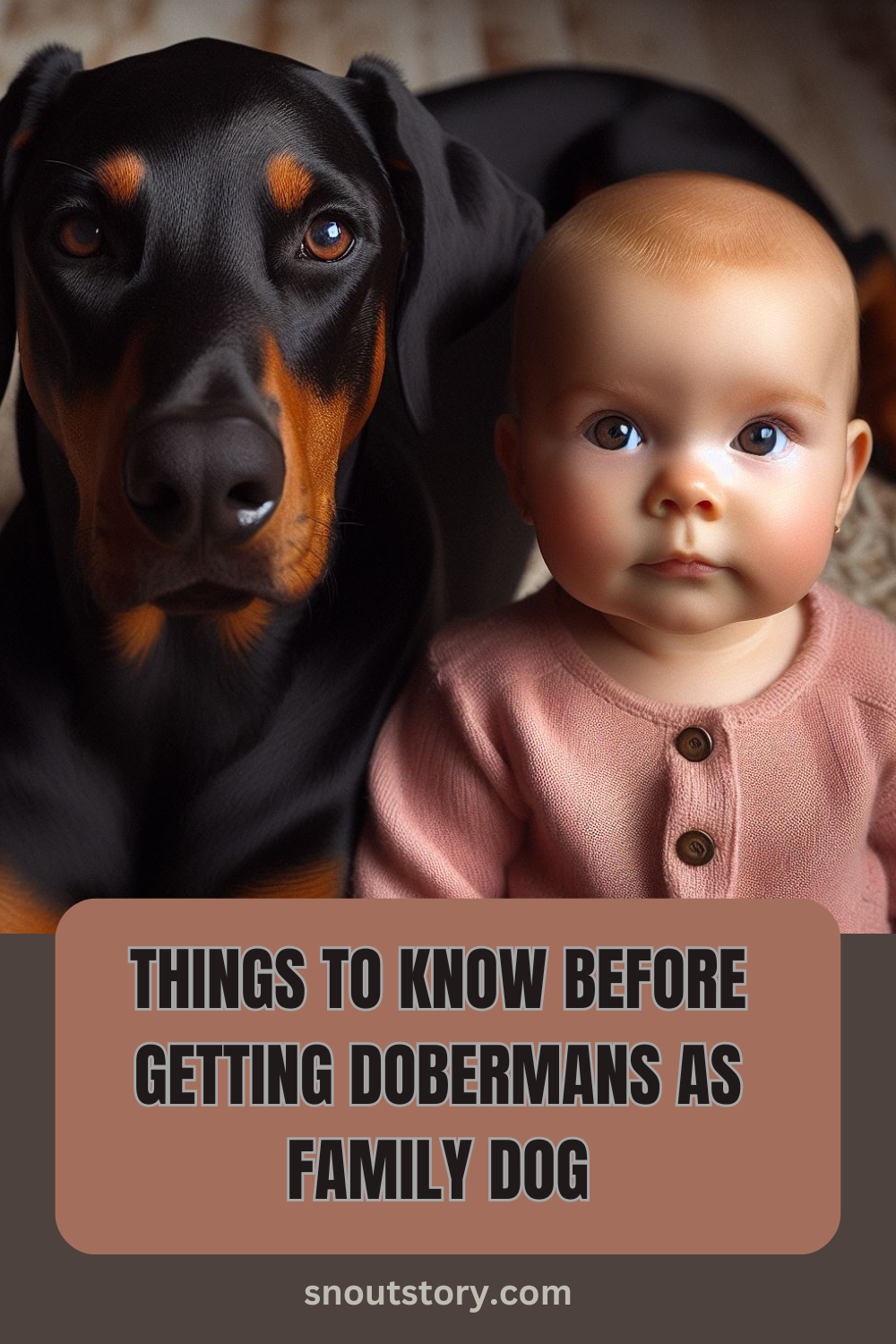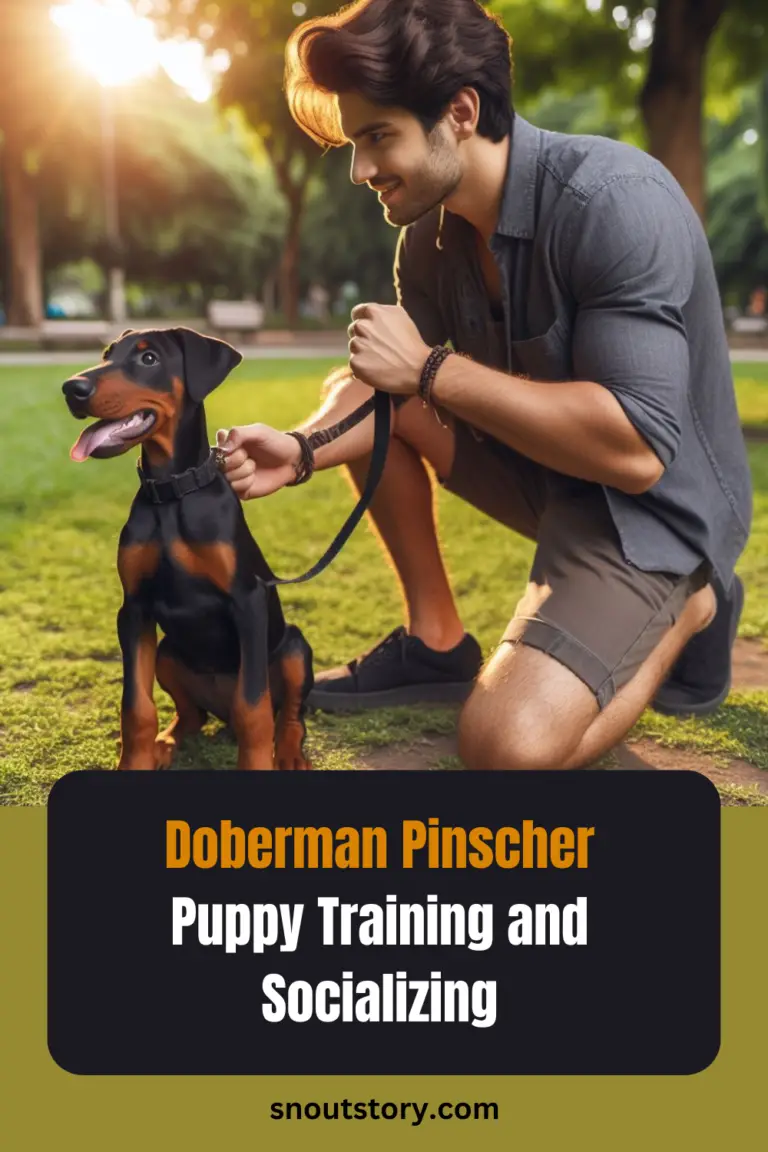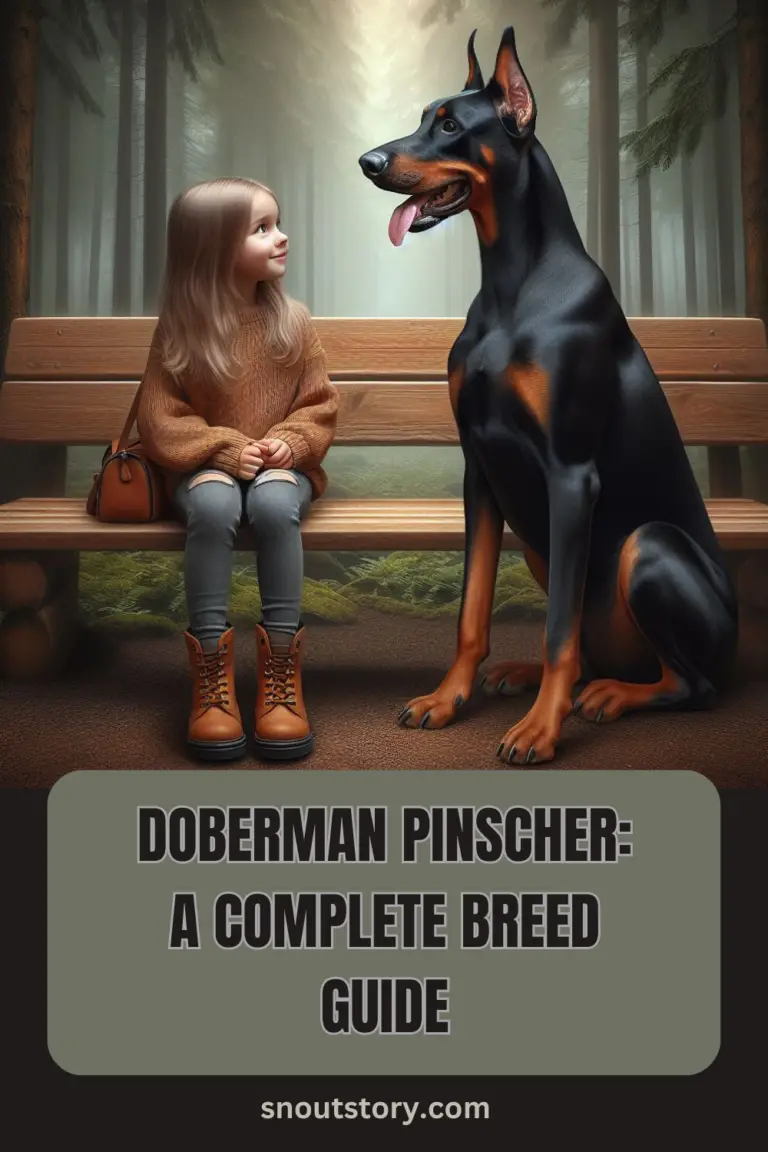The history and origins of the Doberman Pinscher trace back to the late 19th century in Germany. They were developed by a tax collector named Karl Friedrich Louis Dobermann, who sought a loyal and protective companion to accompany him during his rounds.
Dobermann bred various dog breeds, including the Rottweiler, German Pinscher, Greyhound, and Weimaraner, to create the robust and versatile breed we know today. The Doberman Pinscher was initially utilized for tasks such as guarding, police work, and even as war dogs due to their intelligence, strength, and agility.
Over time, their reputation as loyal and dependable working dogs spread worldwide, and they gained popularity as both working dogs and beloved family pets.
Physical Characteristics and Appearance
The physical characteristics and appearance of the Doberman Pinscher are striking and distinctive. They are medium to large-sized dogs with a powerful and muscular build, conveying strength and athleticism. Their sleek and compact bodies are well-proportioned, giving them a poised and alert stance.
One of the most recognizable features of the Doberman is their elegant and noble head, adorned with a long, wedge-shaped muzzle and dark, intelligent eyes that exude confidence and vigilance. Their ears are typically cropped to stand erect, enhancing their attentive expression. Their coat is short, smooth, and lies close to the body, coming in a variety of colors such as black, blue, red, and fawn, often with rust-colored markings.
Overall, the Doberman’s appearance reflects their reputation as a capable and distinguished working breed, blending gracefulness with strength.
| Male Doberman | Female Doberman | |
|---|---|---|
| Height (inches) | 26 – 28 inches | 24 – 26 inches |
| Weight (pounds) | 75 – 100 pounds | 60 – 90 pounds |
Doberman Intelligence and Trainability

When it comes to Doberman intelligence and trainability, these dogs are often regarded as one of the smartest breeds around. Their high level of intelligence makes them quick learners and eager to please their owners.
However, their strong-willed nature means that they require consistent and firm training from an early age to channel their intelligence in the right direction. Positive reinforcement techniques work best with Dobermans, as they respond well to praise and rewards. With proper training and socialization, Dobermans can excel in various activities such as obedience, agility, and even therapy work.
It’s essential for owners to provide mental stimulation and engage in regular training sessions to keep their Dobermans mentally sharp and well-behaved companions.
Loyalty and Protective Instincts
Loyalty and protective instincts are inherent traits in Dobermans, making them incredibly devoted companions to their owners. These dogs form strong bonds with their families and are known for their unwavering loyalty and affection.
When it comes to protecting their loved ones, Dobermans are always on alert and ready to defend against any perceived threats. Their natural instincts, combined with their imposing presence, make them excellent watchdogs and guard dogs.
However, it’s crucial for owners to provide proper training and socialization to ensure that their protective instincts are well-balanced and directed appropriately. With the right guidance and care, Dobermans can fulfill their roles as loyal companions and devoted protectors of their families.
Doberman Energy Levels and Exercise Requirements
Dobermans are known for having strong levels of energy and athleticism, making them ideal for active lifestyles. These dogs thrive on regular physical activity and mental stimulation to keep them happy and healthy.
Daily exercise is essential to help them burn off excess energy and prevent boredom, which can lead to destructive behaviors. Activities such as brisk walks, jogging, playtime in the yard, and interactive games are all great ways to fulfill their exercise requirements. Additionally, engaging in training sessions and agility exercises not only provides physical exercise but also helps to stimulate their intelligent minds.
It’s important for owners to dedicate sufficient time each day to meet their Doberman’s exercise needs, ensuring they remain well-balanced and content companions.
Socialization and Interaction with Humans
Socialization and interaction with humans are vital aspects of a Doberman’s development and well-being. These intelligent and loyal dogs thrive on companionship and bond closely with their human family members.
Proper socialization from an early age helps them learn how to behave appropriately in various situations and around different people. Positive experiences with humans, including regular interaction, gentle handling, and exposure to various environments, can help foster confidence and trust in these dogs.
Additionally, ongoing interaction with family members, friends, and strangers alike helps reinforce their social skills and strengthens the bond between the dog and its human companions. Regular outings to dog-friendly places and participation in activities such as obedience classes can provide valuable opportunities for socialization and ensure that the Doberman remains well-adjusted and comfortable in various social settings.
Are Dobermans Good with Children and Other Pets?
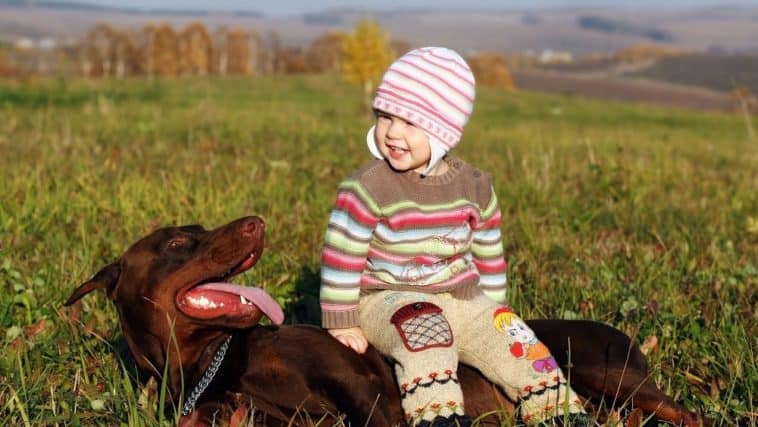
Ensuring compatibility between a Doberman and children or other pets requires careful consideration and proper training. While Dobermans are known for their loyalty and protective instincts, they can also be gentle and affectionate companions when raised in a loving environment.
Introducing a Doberman to children and other pets at a young age and providing consistent training and supervision is key to fostering positive relationships. Teaching both the dog and the children how to interact safely and respectfully with each other is essential for preventing any potential conflicts or accidents. Similarly, gradual introductions and supervised interactions with other pets in the household can help mitigate any territorial or aggressive tendencies.
With patience, consistency, and positive reinforcement, Dobermans can coexist harmoniously with children and other pets, enriching the lives of all involved.
Common Behavioral Issues and How to Address Them
Addressing common behavioral issues in Dobermans requires a combination of understanding, patience, and consistent training techniques. Some common behavioral issues in this breed include excessive barking, aggression, separation anxiety, and destructive chewing. T
o address these issues, it’s essential to first identify the underlying cause. For example, excessive barking may stem from boredom or anxiety, while destructive chewing could be a result of teething or lack of mental stimulation. Once the cause is determined, positive reinforcement training methods can be employed to redirect undesirable behaviors and reinforce positive ones.
Providing regular exercise, mental stimulation, and socialization opportunities can also help prevent and alleviate behavioral issues. Additionally, seeking guidance from a professional dog trainer or behaviorist can provide valuable insight and tailored strategies to address specific concerns effectively. With patience, consistency, and understanding, many behavioral issues in Dobermans can be successfully managed, leading to a happier and well-adjusted canine companion.
Famous Dobermans in History and Pop Culture
Throughout history and in popular culture, Dobermans have made their mark as iconic and unforgettable canine characters. From film and television to literature and real-life heroics, these intelligent and loyal dogs have captured the hearts of many.

Perhaps one of the most famous Dobermans in pop culture is “Higgins” from the television series “Magnum, P.I.“, known for his intelligence and companionship with the lead character, Thomas Magnum.
Another notable Doberman is “Zeus” from the movie “Friday the 13th: The Final Chapter“, where he played a protective and loyal guardian.
In real life, Dobermans like “Kaiser,” the beloved pet of President Lyndon B. Johnson, also gained fame for their role as faithful companions to influential figures. These examples showcase the versatility, loyalty, and impact of Dobermans in both fictional narratives and real-world contexts, solidifying their enduring legacy in popular culture.
Myths and Misconceptions About Doberman Temperament
There are several myths and misconceptions surrounding the temperament of Dobermans, often perpetuated by misinformation or sensationalized portrayals in media. One common misconception is that all Dobermans are inherently aggressive or dangerous.
In reality, Dobermans are known for their loyalty, intelligence, and protective instincts, making them excellent family companions when properly trained and socialized. Another myth is that Dobermans are not suitable for households with children or other pets. However, with the right upbringing and training, Dobermans can be gentle and affectionate with children and other animals, becoming cherished members of the family.
It’s important to debunk these myths and focus on the true nature of Dobermans, which is characterized by their loving and devoted temperament.
Recommended
8 Super-Foods to Ensure Your Doberman Lives a Long-Life
Do Doberman’s Make Good Guard Dogs – Are They Aggressive?
Do Dobermans Make Good Family Dogs? 8 Surprising Facts
Doberman Pinscher Puppy Training and Socializing (A Complete Guide)
Doberman Pinscher Size and Weight – Everything a New Owner Needs to Know
The Doberman Pinscher: Complete Breed Guide
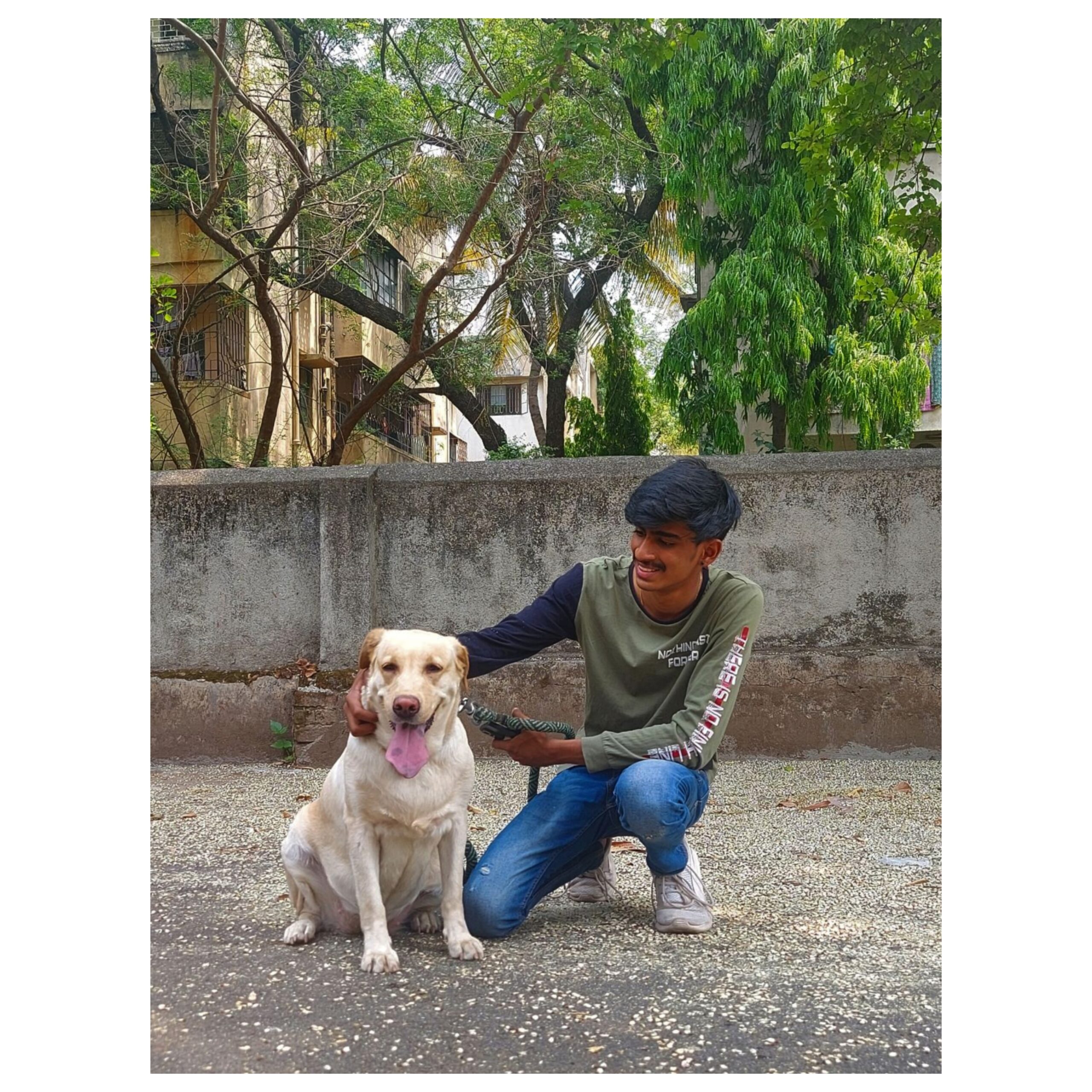
Vedant Narvekar is an experienced digital marketing expert with a profound love for nature and animals. With a career rooted in leveraging online platforms to drive engagement and promote meaningful causes, Vedant’s passion for animals inspired him to start Snout Story—a blog dedicated to educating people about pet keeping and sharing proper knowledge about caring for animals. Drawing on his expertise in digital marketing, Vedant utilizes his platform to advocate for responsible pet ownership, providing valuable insights on pet care, training, nutrition, and more. Through Snout Story, Vedant aims to empower pet lovers with the information they need to provide the best possible care for their furry companions, while also fostering a deeper appreciation for the natural world and the creatures that inhabit it.

